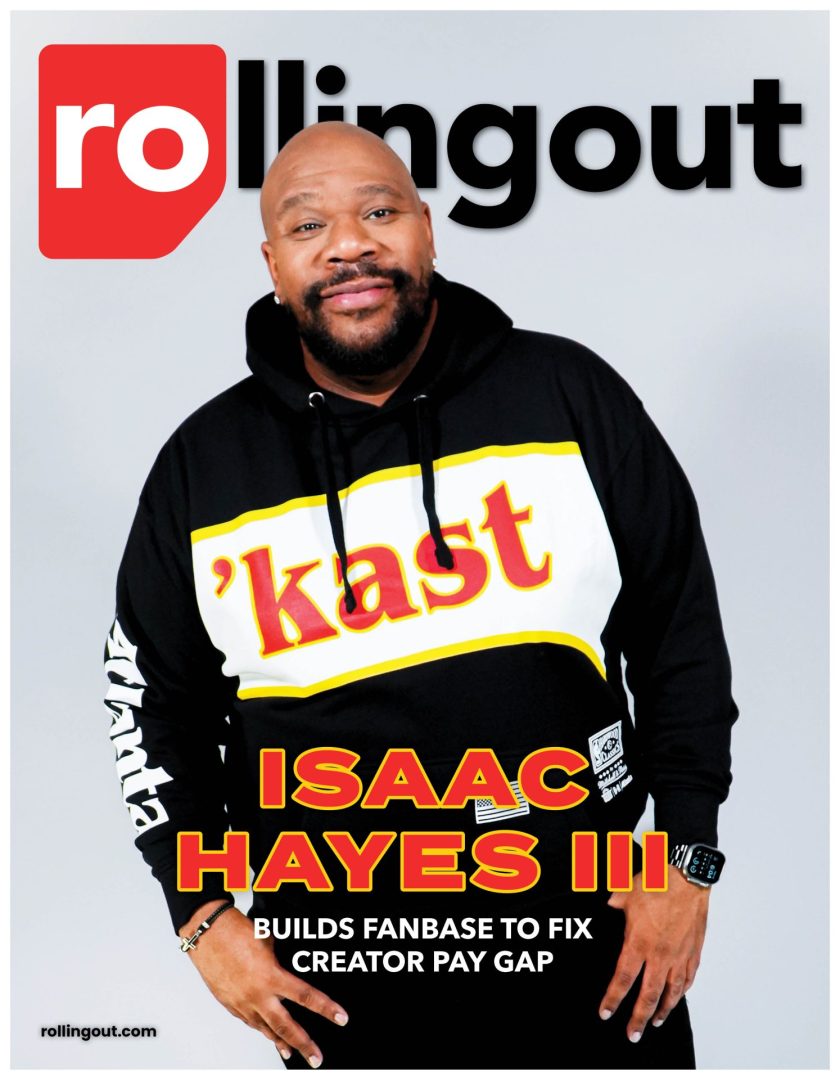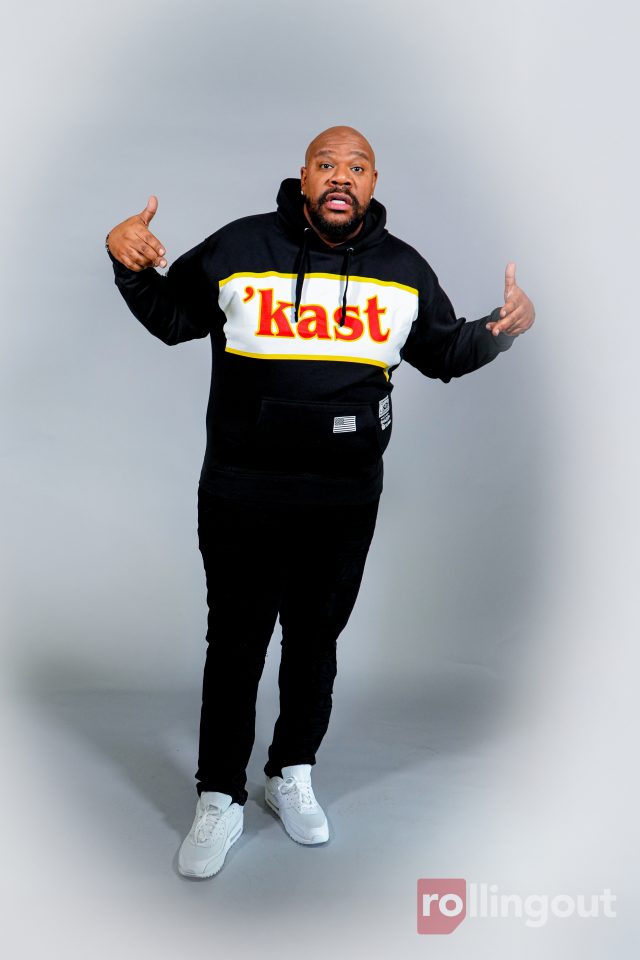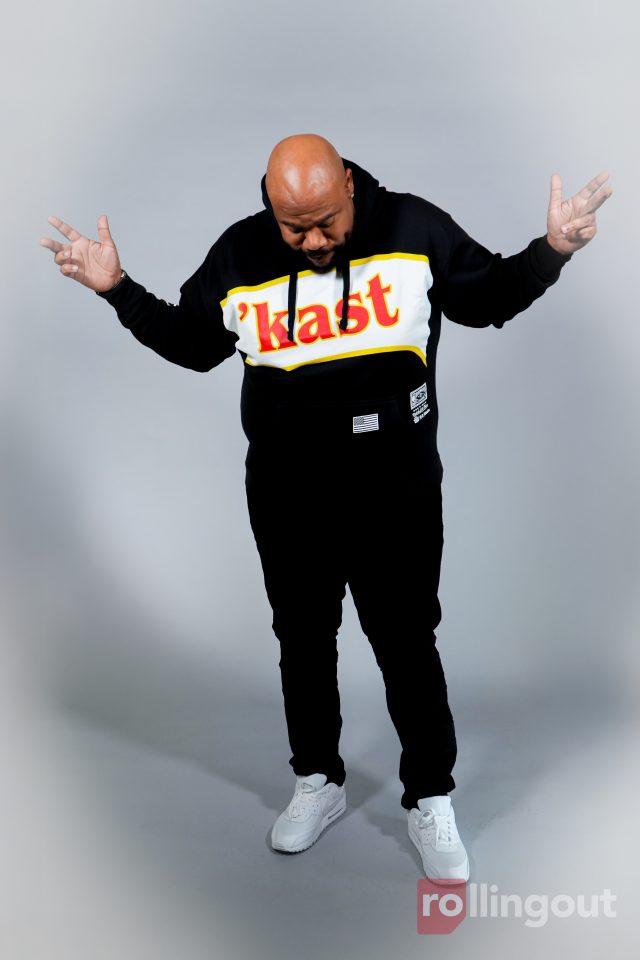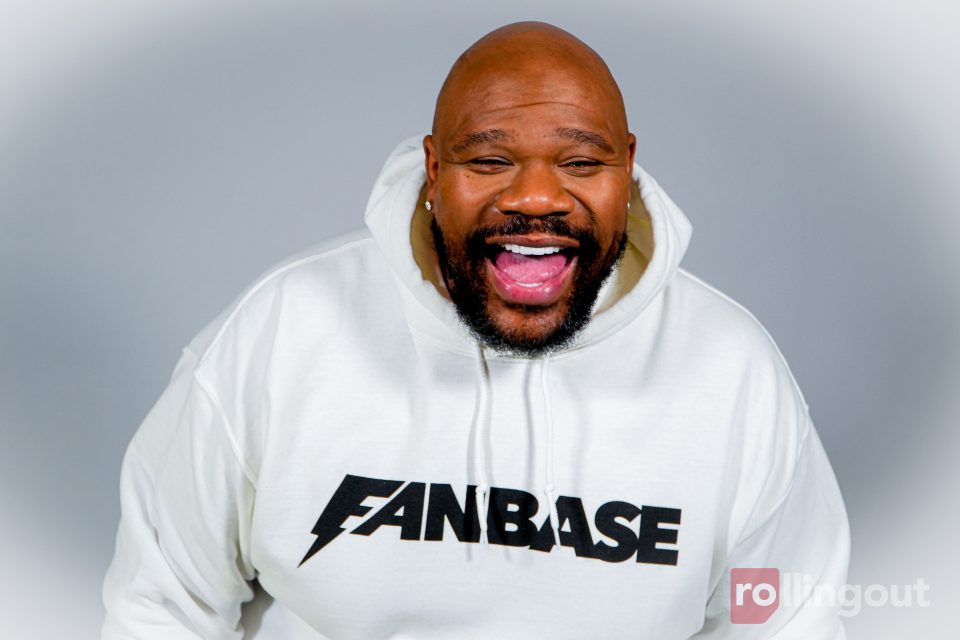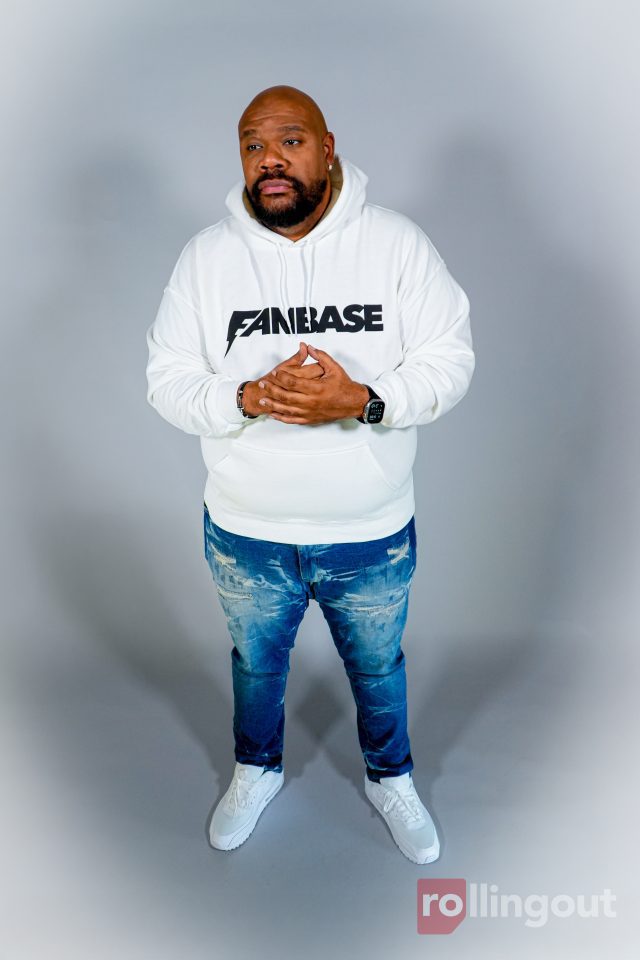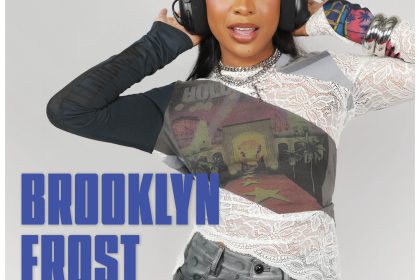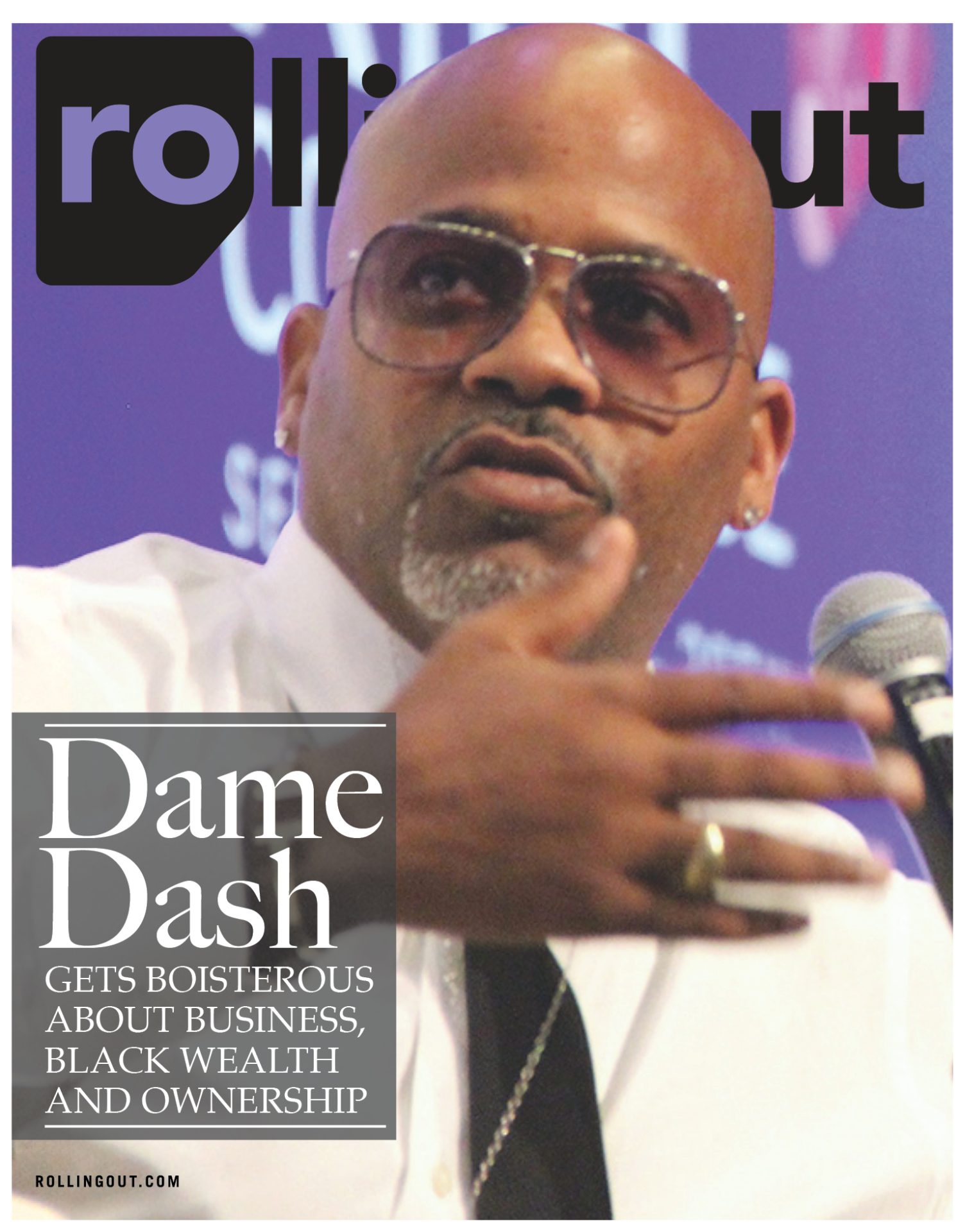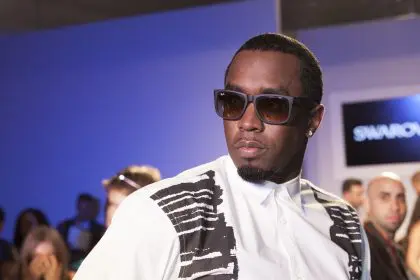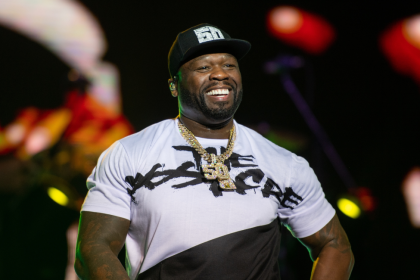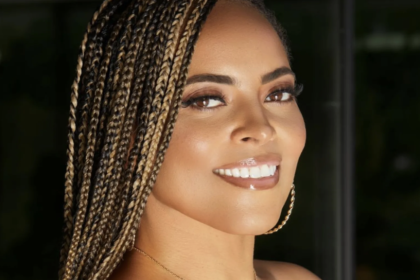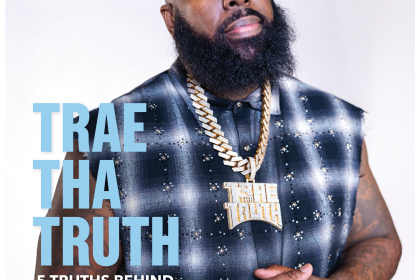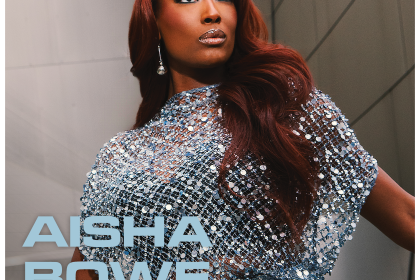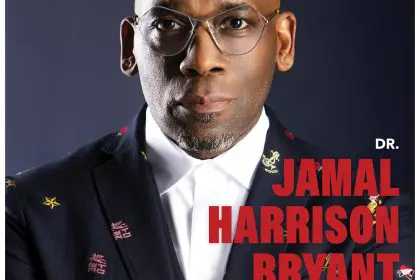For Isaac Hayes III, the fight for creator equity isn’t just business – it’s personal. Watching his legendary father lose the rights to his music catalog, Hayes learned early lessons about ownership that would later shape his vision for social media’s future. Now, as the founder of Fanbase, he’s turned those lessons into action, raising an unprecedented $18.5 million through equity crowdfunding and building the platform to a $50 million valuation. His mission: transforming how creators monetize their content by focusing on true fans rather than viral fame.
While competitors burn through venture capital with splashy influencer parties and marketing stunts, Hayes is solving a fundamental problem in social media’s ecosystem. Fanbase’s groundbreaking peer-to-peer subscription model is challenging the industry’s status quo, where content creators – particularly from marginalized communities – often see their viral trends generate massive value for platforms without receiving equitable compensation. For the son of soul icon Isaac Hayes, this innovative approach to creator monetization isn’t just disrupting social media; it’s ensuring the next generation of creators owns their success.
What specific market observations led you to create Fanbase, and how does your platform address these gaps differently than existing social media platforms?
The reason I built Fanbase is because I saw an inequity between the Black community and the white community from a creator perspective. Typically, on platforms like TikTok, Black creators will create a trend, and that trend will go viral to an extent. Then, a white creator will take that same trend, and the trend will go super viral. A lot of brand opportunities and stuff like that will happen for the other creator.
I don’t have a problem with any of that at all. I think the whole platform is designed so that one person does a trend, and another person does a trend. But when brands are involved, it behooves the platforms to have famous white creators because white creators advertise to all people, as opposed to what a brand thinks a Black creator would advertise for.
So it benefits the platform to say, “Okay, if this person has the viral dance, they can work with MAC Cosmetics, Dunkin’ Donuts, Starbucks, XYZ,” whereas a Black creator might not be able to have that many ads.
That was one thing. And then two, I just felt like these platforms play with your visibility. They don’t allow you to reach your full audience, and buried within that audience is what I call your fan base. If 95% of the people that follow you are mildly interested in you, they’re nosy, or they’re haters, the remaining 5% of people that follow you are your true fan base.
So if you have 100,000 followers on social media, you’ve got 5,000 fans. If you monetize those 5,000 people, let’s say to the tune of $2.50 a month, that’s $12,500 a month. That’s $150,000 a year. That’s more than 96% of Americans make. People are underutilizing their audience—their fan base—by not monetizing the people who really want to see them.
Share three key insights from your experience raising over $18.5 million through equity crowdfunding, and how this approach differed from traditional venture capitalism.
The first key insight, in my opinion, what benefited us—the product already existed. It wasn’t me taking a PDF of some slides and trying to say, “Hey, can I build this?” It was something that already existed in the marketplace. So one thing is, have something that is readily available for the public to use if you’re going to raise capital for it. It’s harder to raise off an idea than it is off a prototype. If you can get to the prototype phase, it’s easier to raise money.
There’s a segment in building your product where you, yourself, might have to fund your business. That’s one.
Two, raising capital is like running for office. You’re campaigning, and it never stops. If you don’t treat it like that, you won’t be able to hit your goals. I know plenty of people who have tried to raise capital while doing other things at the same time and have failed miserably. You have to commit yourself to the process 24/7. That’s why I always have my phone with me and am always letting people know how much money we’re raising.
And three, you’ve got to have your business together. Getting your business in order is crucial. Only 2% of people who apply for equity crowdfunding, regardless of age, race, or gender, actually get accepted. Imagine getting through that process, and then there’s still a percentage of people who don’t make it through the compliance process to even raise capital.
It’s not like you can just call up an equity crowdfunding site and raise money. You really have to have your business together before you do that.
If you don’t mind me asking, what is the compliance process?
That means, are your financials in order? They do a “bad actor” check. You have to go through the SEC, and the platform you raise with has to approve you to raise capital.
There’s a lot you have to submit. You have to validate your valuation, complete all your risk factors, and put in all the information that describes your business. You can’t have any misleading information in there. You can’t assume or say things that aren’t true, like, “This is going to be the biggest app of all time.” You can’t say that.
You have to go off the facts and raise capital in a true, factual fashion.
How has the power of Black economic collaboration and community support contributed to Fanbase’s growth trajectory?
I want to make sure I say this correctly. There are six Black people who were responsible for Fanbase getting to the place where I was able to raise capital. Their names are Justin Dawkins, Jewel Burks, Barry Givens, Angela Benton, Monique Idlett, and Dawn Dixon.
The first three I mentioned are the founders of Collab Capital. They were all successful in the tech space in their own right. I met them at The Gathering Spot, and they answered a lot of my questions. They were my tech senseis—my mentors in learning the tech business. I was coming from the music industry, and I didn’t know about tech.
I had to sit with them, bother them, and sometimes be a pest, but I asked the necessary questions. I appreciate them for lending their information, wisdom, and knowledge so I could get to this point and understand the business side of things.
The last three—Monique Idlett, Angela Benton, and Dawn Dixon—helped me in different ways. Monique, as a VC, recommended that I try equity crowdfunding to raise capital for my business. Angela had successfully raised capital for her business, and she made the introduction to the platform I use today, which is StartEngine.
Dawn Dixon was the first Black woman to raise a million dollars in equity crowdfunding for her company. I remember even taking a course with Dawn, sitting with her for an hour or so, and learning the process for raising capital through equity crowdfunding.
So the Black community directly helped me raise capital. That’s why I always tell people how to raise capital and do the same thing—I always pay it forward.
Can you walk us through your funding journey, from your initial seed round to your current position, and what each stage taught you?
My initial funding journey started with me putting my own money into the business. That’s very significant because, typically, when you’re raising seed rounds, those are the most advantageous times for angels and VCs to get large chunks of your company. At that time, I spent about $200,000 of my own money investing in the business. It was a risk. It was money I did not have at the time. It was probably meant to go other places, but I had to decide whether to spend it on other things or try to build this business. Fortunately, it worked out the right way—betting on myself probably saved me about 20% of equity in the company.
When you’re spending your own money, you maintain ownership. Sometimes, people give away 10%, 15%, or even 20% of their business for $50,000, $100,000, or even $150,000. Coming from the music industry gave me a lot of insight and perspective on ownership. Just like a song—if I could keep 20% more of the publishing by spending my own money on it, then I have a larger share of the pie. For me, it has always been about ownership. That’s my generational trauma—everything about me is, “How can I own it? How can I maintain control?”
Do you feel like Black entrepreneurs seeking crowdfunding or investment capital are taken advantage of? Do you think they give up too much equity?
I don’t think it has anything to do with race at that stage. A VC is looking to get the best deal possible—it’s just business. Coming from the music industry, I can say nothing is more cutthroat and underhanded than the music business. So, to me, tech is like kindergarten compared to music. I’ve seen every trick, every tactic. I’ve had people try to do the same things to me in the music industry or try it with my father. I can see those moves coming a mile away.
A VC or angel investor will always try to get the best deal. But some deals can be predatory, depending on how your business is structured. That’s the biggest mistake most founders make. When I built Fanbase, I structured it to retain ownership even if I accepted capital. I created two types of security—common stock and voting stock. In most companies, the board controls the CEO. If the board decides the CEO must go, then they fire the CEO. This happens in publicly traded companies all the time.
What happens a lot, especially with Black founders, is that they take capital and trade that for board seats. Then, those board members may not share their vision and can end up voting them out of their own companies. I have friends who were voted out of their companies. Even Steve Jobs got voted out of Apple. I wanted to ensure that never happened to me, so I structured Fanbase with two classes of stock. I hold all the voting stock, so there is no board that can remove me. It’s a privately held company, and I control it.
Why wouldn’t Steve Jobs have protected himself? I didn’t think a CEO could get kicked out. Do they still get paid after that happens?
I think it’s because you become so attached to your vision that you believe everyone else will support it. When you hire a board, their job is to keep the company functional and solvent. That might go against your vision if you want to take risks, like spending a million dollars on a new product. The board may say no, and that can lead to a disagreement. That’s what happened with Apple—there was a disagreement between Steve Jobs and the CEO he brought in. The board ultimately sided with the CEO and voted Jobs out. I didn’t want that mistake to happen to me.
What strategies have you implemented to attract and retain both creators and users while building Fanbase’s ecosystem?
That’s a tough one. Our main strategy for retention has been focusing on community. I didn’t want to do anything inauthentic. A lot of competitors enter the marketplace, raise money, and then try to create the appearance of success. They’ll throw lavish parties, rent expensive offices, or host high-profile events to make it look like their app is thriving when it isn’t.
To truly build something lasting, you have to understand that there’s the exception and then there’s the rule. The exception is a company like Facebook or Instagram. Those are once-in-a-generation companies. Look at TikTok’s parent company, ByteDance. They started in 2012—it took years before TikTok became one of the biggest apps in the world. People don’t realize TikTok was originally Musical.ly in 2016 before ByteDance acquired it in 2017. The original TikTok was called Douyin in China. When ByteDance bought Musical.ly, they turned it into TikTok.
Our strategy is focused on long-term community building. It takes time. Unless you have a lightning-in-a-bottle viral moment, like Instagram did with its photo feed, success won’t happen overnight. Instagram revolutionized the way people interacted with content by decentralizing websites. Instead of going to ESPN.com or WorldStar, all content was in one feed. That was the secret sauce.
For us, growth will take longer, but we’re doing it independently. Many companies that don’t look like me get $30–$40 million early on. Some companies were founded two or three years after Fanbase, received tens of millions in funding to compete with us, and they’re already out of business. They burned through all that money in less than a year.
That’s a great point. Why do you think those companies failed? Why couldn’t they replicate what you’re doing?
They weren’t focused on community. They tried to buy an audience instead of building one. Many platforms give influencers big payouts, thinking that will make the app popular. I’ve had offers where people say, “We’re hosting a creator dinner at the Super Bowl, Fanbase should be there. It’ll cost $100,000.” I’m not doing that. If those 50 creators don’t bring long-term retention and engagement to the platform, it doesn’t make sense.
A lot of platforms fail because they spend on marketing stunts instead of investing in actual community-building. They throw extravagant parties, pay influencers six figures to post about their app, and expect instant success. It doesn’t work like that. They end up burning through cash, and when the money runs out, they collapse.
How do you approach product development and feature releases while maintaining platform stability and user experience?
I want to build things that are disruptive, but I also know there’s a familiarity that comes with products people use. So, we started with something familiar but also introduced experiences that people may not even understand or know they want yet. It’s about giving people a little of what they will want in the future while also providing a lot of what they expect now.
Right now, engagement is everything. Social media has spent the last 20 years convincing people that their content has no value. It was fine when people were just taking photos of their food—it was free and easy. But now, content creators are investing thousands of dollars into equipment, switchers, cameras, ring lights, software, and editing tools. That has a cost, yet they’re still putting content on the same platforms without getting paid for it.
We need to start providing opportunities for people to monetize their efforts. I call it social rehab—helping people transition from the high of attention and engagement to realizing they can make real money. You don’t need a million followers to make a million dollars. If you have 50,000 people paying you $2.50 a month, that’s $125,000 a month or $1.5 million a year. People are taught incorrectly that fame leads to fortune when, in reality, you can go straight to fortune with hard work and directing people to the right platform.
What role has your family legacy played in building Fanbase, and how has it influenced your business decisions?
It’s everything. I talk about my generational trauma through my father. My father, Isaac Hayes, lost the rights to his music a year before I was born. He filed for bankruptcy, and they took his ability to earn income from his creations. He owed about $2 million, but instead of just garnishing his wages, they took ownership of his music in perpetuity. That music went on to generate $50–$60 million over 30 years, money my father never saw.
Ownership of content and monetization is crucial to me. That’s why I built Fanbase the way I did. In the music industry, there’s a lot of compromise in business deals. Some producers are forced to give up publishing rights just to get on an album. I refused to do that. I discovered music licensing, where I could retain ownership and still make money.
I left the music industry and put all my instrumentals into a catalog for licensing in TV shows, the NBA, Real Housewives, Love & Hip Hop, and more. That allowed me to borrow $200,000 against my licensing royalties to fund Fanbase. If I hadn’t owned my publishing, I wouldn’t have been able to advance myself the money to build Fanbase.
How does one license music for the NBA or TNT? What’s that process like?
There are companies that function as music content libraries and have relationships with music supervisors. These companies negotiate deals with artists and distribute their music to networks and production companies.
Typically, these deals aren’t the most advantageous for creators. The distributor often takes 75 percent of the revenue, while the artist gets only 25 percent. But because I had some success in the music industry, I had leverage. I was able to negotiate a 75/25 deal in my favor. At the time, the company told me only one other producer had done that before—Timbaland.
So, I put all my music into that library. You might hear my music in the background on the NBA on TNT, Love & Hip Hop, or other shows and never even know it’s mine. It’s quiet money. While other producers were chasing placements on a Rihanna album, I was licensing my music and getting paid. I didn’t have to stress over industry politics—I could just go to the mailbox and collect my checks.
That was a smart way to approach it. That sounds like the smartest way to be in the music industry. So how does Fanbase measure success beyond traditional metrics, particularly in terms of creator empowerment and community impact?
We measure our success based on disruption and innovation—things that we see others adopting after we do them. There are a lot of things we pioneered that bigger platforms have since copied. Given that we haven’t raised a lot of money compared to major platforms, I consider that a success.
One major innovation we introduced was in-app purchase peer-to-peer subscriptions. Before Fanbase, no mobile app allowed you to subscribe to another person using Apple Pay or Google Pay. You could subscribe to Netflix, Apple Music, or Spotify, but not an individual content creator. When we approached Apple and Google about this in 2018, they initially rejected the idea. But my CTO realized that if we followed their guidelines precisely, we could create something groundbreaking. We launched Fanbase with that feature, and now, a few years later, Instagram and other platforms have followed suit.
We also created gold verification badges before platforms like Twitter (now X) did. We introduced content migration tools so users could port their content from Instagram and TikTok to Fanbase, something other platforms have now adopted. These innovations don’t always get recognized in mainstream tech media, and even Black media often overlooks them.
What frustrates me the most is that independent media and Black media don’t always highlight these achievements. In tech, VCs have media connections. They can call TechCrunch, Fast Company, or Mashable and say, “Cover this startup.” But since I’m independent, I don’t have those relationships. It’s similar to the music industry—independent artists don’t get on The Tonight Show or Saturday Night Live because they don’t have label backing.
Take the recent TikTok controversy, for example. When mainstream media was focused on TikTok’s potential ban, Fanbase was ranked in the top 20 on the entire Apple App Store and number six in social media. That’s a huge story, yet no major media outlet covered it. If that kind of attention had been given, Fanbase could have gained millions of new users overnight, just like BlueSky did when people left X. BlueSky’s rapid user growth gave it a $700 million valuation in 60 days.
This is why I push equity crowdfunding so much. If 18 million people moved to Fanbase and the company became worth $700 million, those who invested early would benefit immensely. Media platforms should be buying equity in Fanbase right now. The media landscape is shifting—content distribution is happening through social media, not traditional news networks. If platforms like X, Facebook, or TikTok don’t show something, the world won’t see it. That’s why brands, media companies, and creators need to invest in platforms like Fanbase and use their influence to increase its value.
That makes sense. So what role has independent media played in getting the word out about Fanbase?
It’s been challenging. Major media outlets tend to prioritize companies backed by venture capital. It’s similar to the music industry — independent artists rarely get featured on major platforms like “The Tonight Show” or “Saturday Night Live” because they don’t have label backing.
In tech, when you raise money from VCs, they can call up TechCrunch, Fast Company, and Mashable to get coverage for their startups. Since I’m independent, I don’t have those connections. That means I rely on independent media and Black media to tell our story. But when those outlets don’t cover us either, it makes it 10 times harder for people to know what we’re doing.
That’s a great point. So how do you see creator monetization evolving in the future?
The future of creator monetization is subscriptions. People subscribing to people will be bigger than Netflix. There’s only one Netflix, but there are billions of people. If millions of creators each have subscribers paying small monthly amounts, that market is much larger than traditional streaming services.
Before we wrap up, let’s play a quick game. Just finish these sentences:
The future of creator monetization is…
Subscriptions.
Building a social media platform means…
Building infrastructure and community.
Black excellence in tech is shown in…
Ownership—taking your idea as far as possible and keeping control of it.
Success in fundraising requires…
Unlimited tenacity. Raising capital is like running for office—you have to campaign nonstop. I haven’t checked my phone in about 45 minutes, but if I refresh my page right now, I’ll probably see that Fanbase has raised even more.

